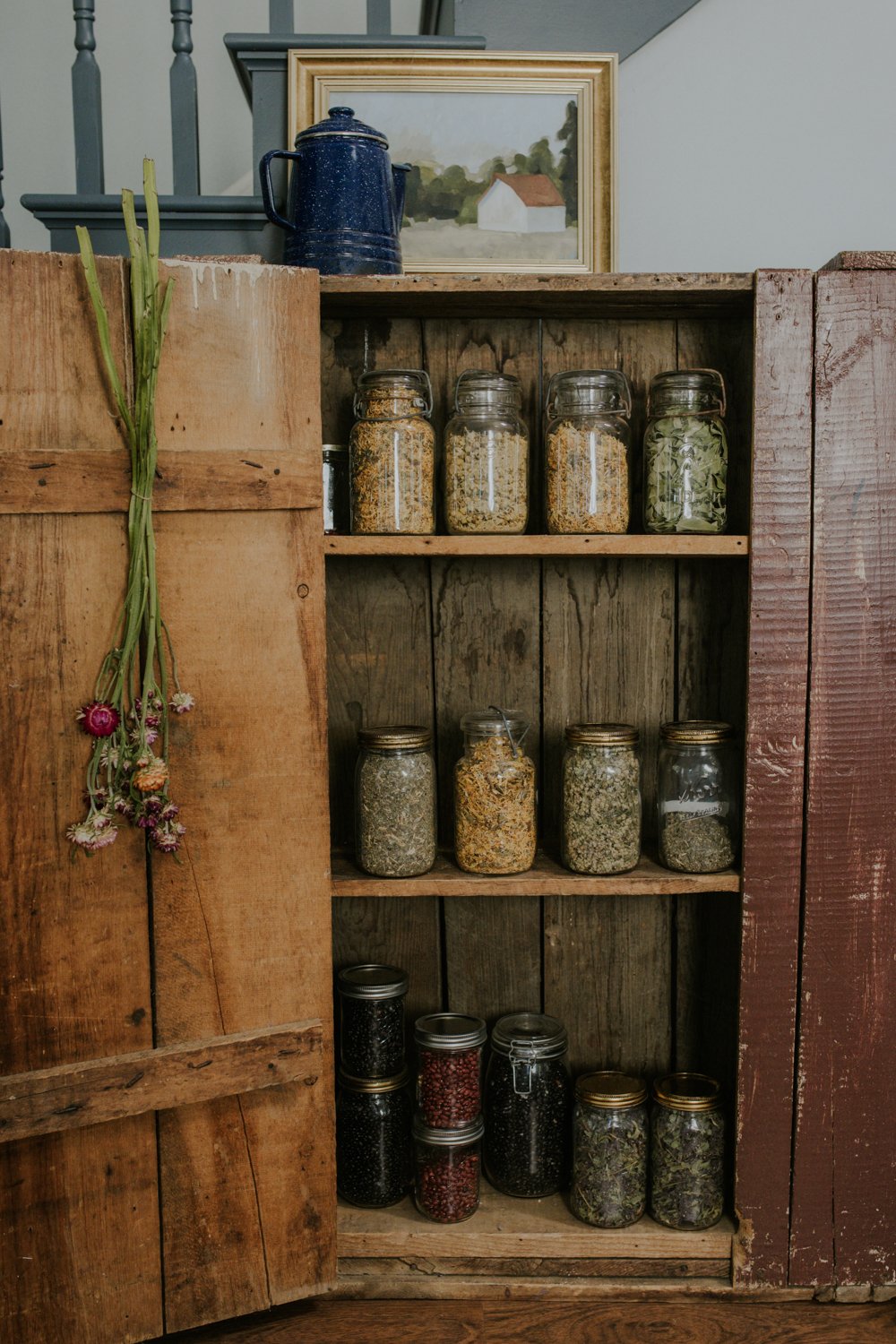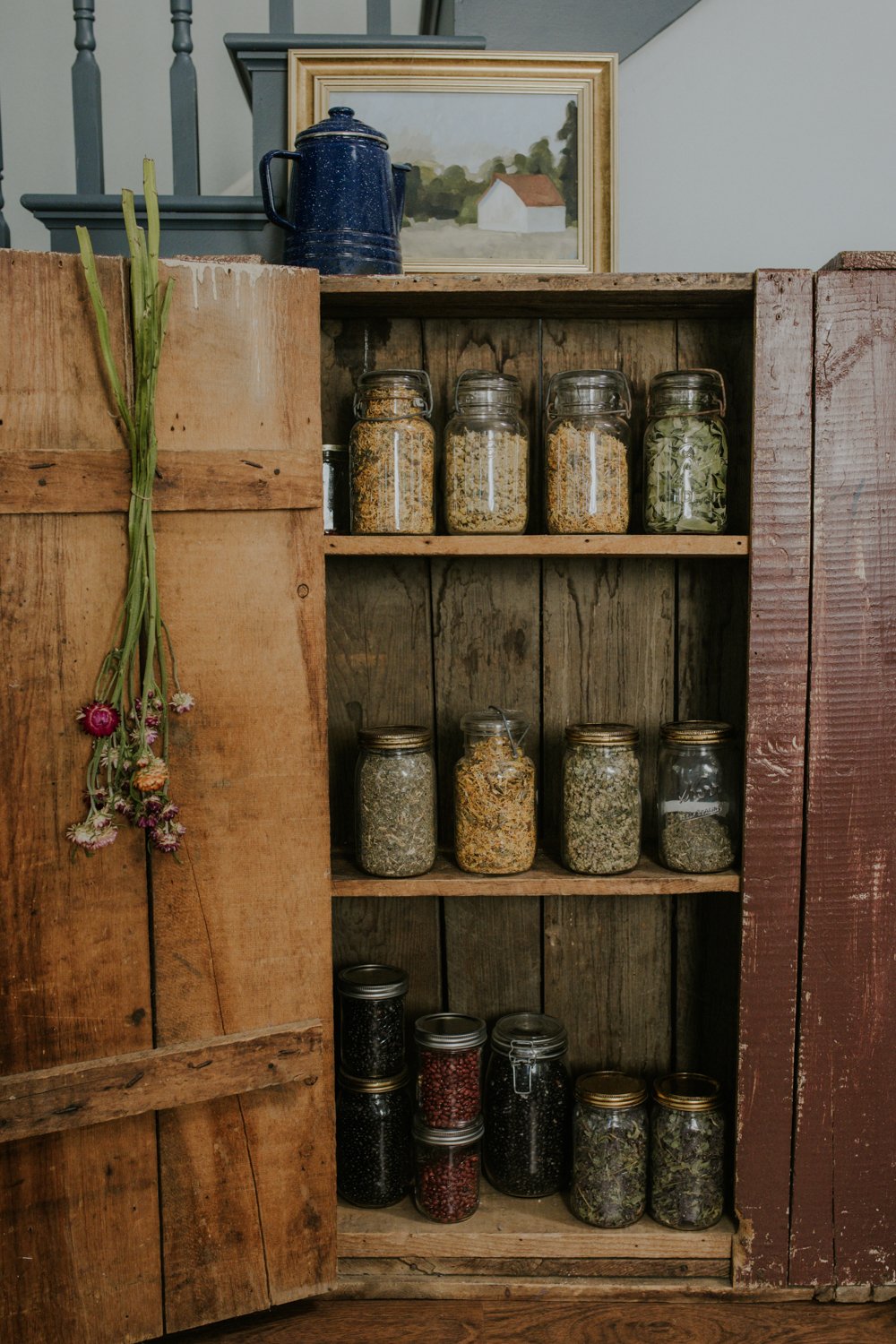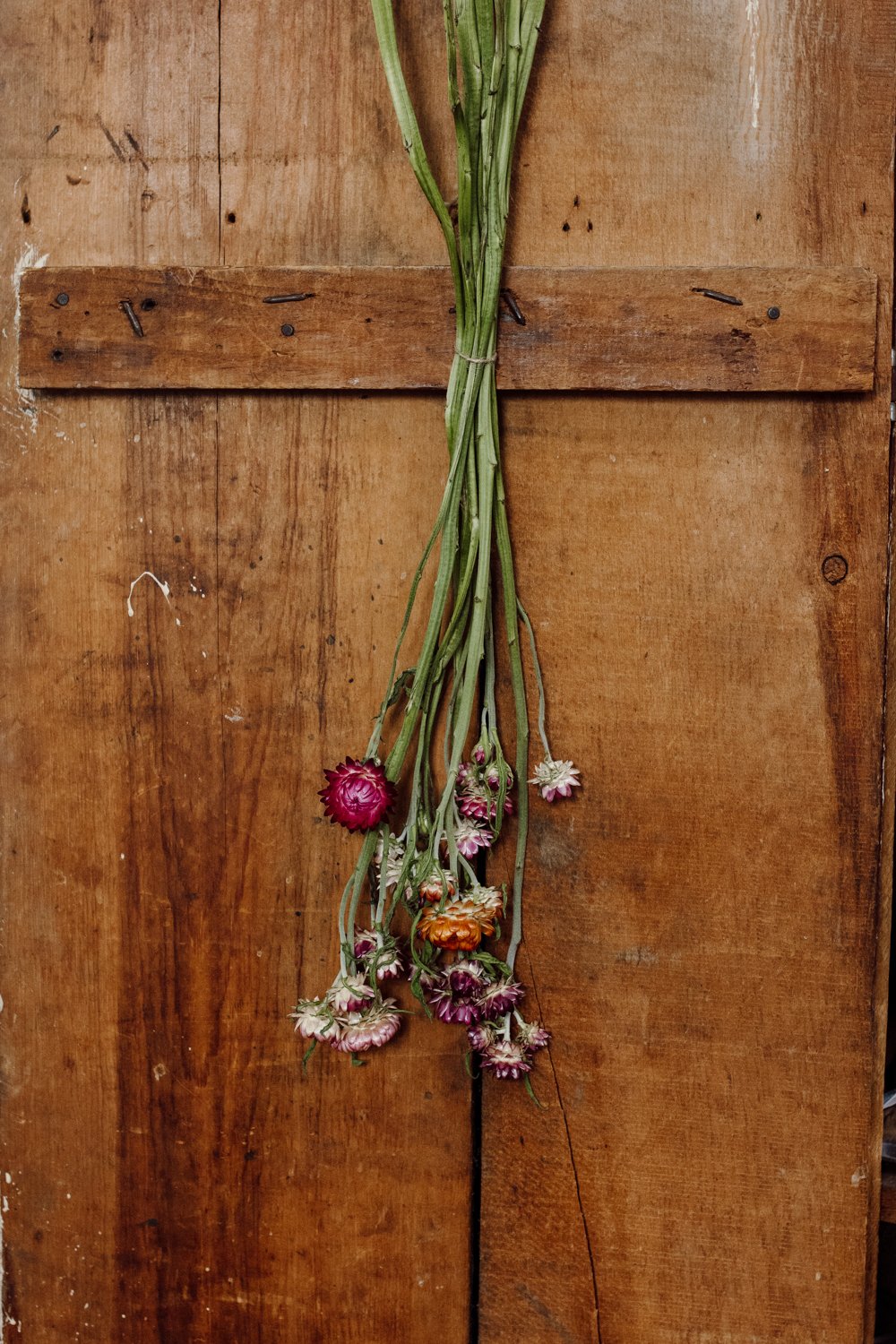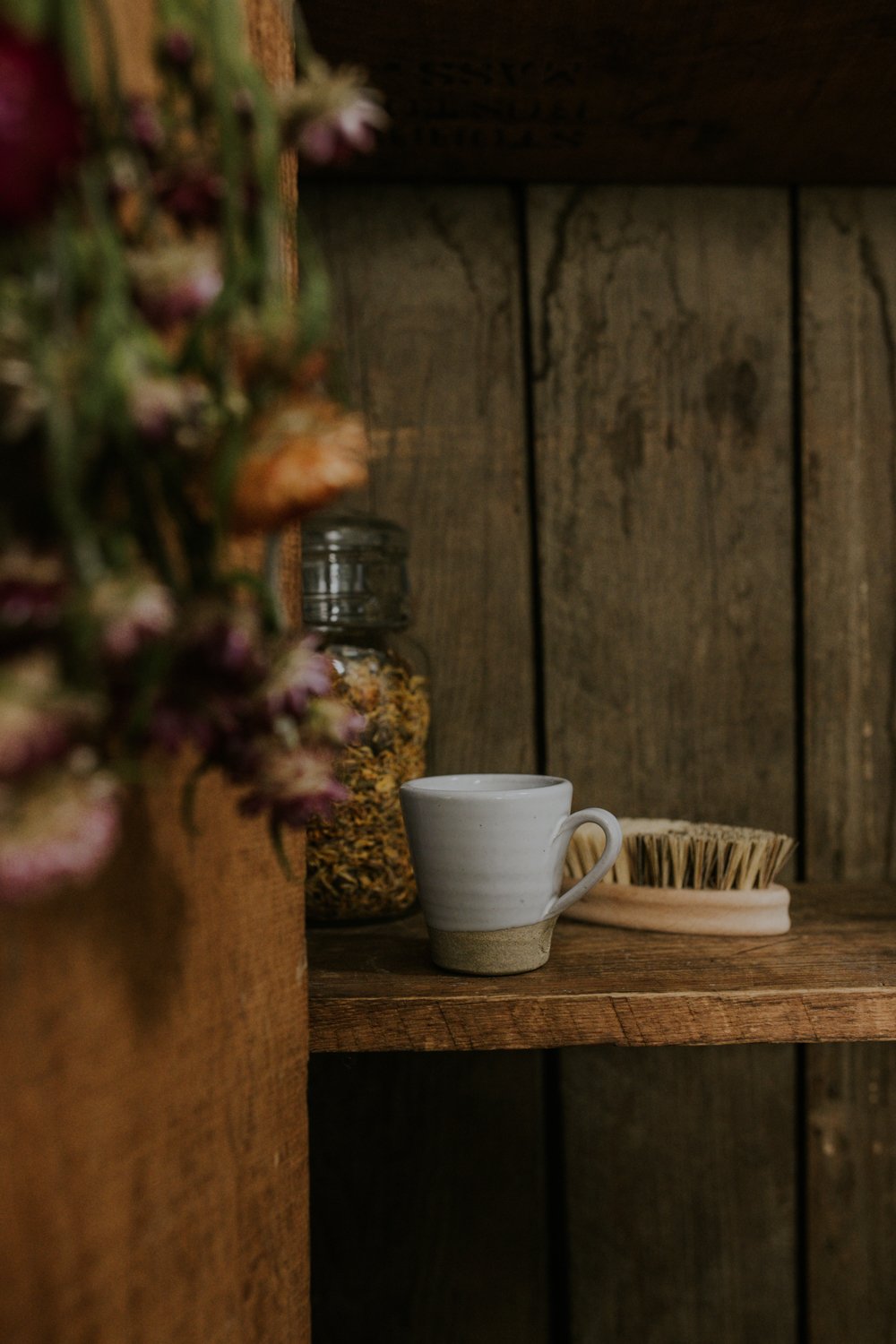BACKYARD GARDENING MADE SIMPLE
Make This Natural Herbal Face Steam With Just 5 Ingredients [Recipe]
Our skin bears the burden of our carelessness on a daily basis - in the driest season, when the air itself is parched of moisture, we still can’t seem to keep up with our eight glasses of water a day, leaving our skin dry and dull - especially when less sunlight is still to be found. And so all sorts of ailments befall us, from chapped lips to premature aging and flaky foreheads. I’ll be the first to admit that as much as I enjoy my skincare routine, it easily falls to the wayside due to my chronic illness or general busyness, my exterior being low on my list of priorities when my joints are aching.
What can we do about dry skin, besides simply hydrating with water and moisturizer? At this point in the season, our skin needs more than simple maintenance. We need a repair. And the best way to jump start this process is to incorporate the spa-like but deceptively simple practice of an herbal face steam.
The Cottage Peach is reader-supported. When you purchase through links on our site, we may earn an affiliate commission at no additional cost to you. All opinions are our own.
Our skin bears the burden of our carelessness on a daily basis - in the driest season, when the air itself is parched of moisture, we still can’t seem to keep up with our eight glasses of water a day, leaving our skin dry and dull - especially when less sunlight is still to be found. And so all sorts of ailments befall us, from chapped lips to premature aging and flaky foreheads. I’ll be the first to admit that as much as I enjoy my skincare routine, it easily falls to the wayside due to my chronic illness or general busyness, my exterior being low on my list of priorities when my joints are aching.
What can we do about dry skin, besides simply hydrating with water and moisturizer? At this point in the season, our skin needs more than simple maintenance. We need a repair. And the best way to jump start this process is to incorporate the spa-like but deceptively simple practice of an herbal face steam.
What does face steaming do?
The heat from face steams loosens oils to aid in the removal of unwanted substances, like excess sebum (oils produced by your skin follicles), dirt and bacteria.
Since acne is caused by excess sebum trapped in your follicles prompting bacteria growth, face steams help combat acne.
When your pores are open and warm, they can more easily absorb hydration as well as any skincare products you apply afterwards.
The heat from the steam also results in increased circulation, promoting healing.
Face steaming is also a meditative, calming practice you can incorporate into your mindfulness routine.
I’ll get into all of the details for how to make your own diy face steam at home below, but first let's talk a bit about the individual plants, flowers and herbs we will be using in this recipe. You’ll only need four herbs for this project, but if you feel like substituting something for one listed below there’s no harm in making the recipe your own. You’ll be able to mix up a batch in less than 5 minutes, and be well on your way to a calming self care ritual that is affordable, natural and zero-waste.
This recipe comes from the Botanical Skincare Course from Herbal Academy and its corresponding book of recipes - you can see my full review of this in depth course here and sign up for classes by clicking here.
Benefits of Chamomile
Because chamomile has anti-inflammatory properties in the form of powerful antioxidants including polyphenols and phytochemicals, it helps to protect against long-term and short-term skin inflammation. Chamomile may also accelerate cell and tissue regeneration, promoting healing. It is also antifungal, antibacterial, and antiseptic. With all these powerful actions, this beautiful apple scented bloom may help to treat an active acne breakout, reducing bacteria and cleansing the skin, whilst also preventing future breakouts.
Benefits of yarrow
Yarrow is a flowering herb that grows in North America, Europe, and parts of Asia. Herbal legend has described that yarrow (Achillea millefolium) was named after Achilles, the Greek mythical hero who used it to stop the bleeding wounds of his soldiers during the Trojan War in 1200 BC. In Medieval times, yarrow leaves were rolled up and stuffed in the nose to stop bleeding. It is particularly beneficial in reducing inflammation; it's effective in speeding healing, reducing the appearance of wrinkles, reducing redness, unclog pores, calm irritation and reduce acne scars.
Benefits of lavender
Aside from its lovely scent, lavender’s anti-inflammatory, antimicrobial, and antifungal properties make it an incredibly useful plant for our skin. It can soothe and calm skin, help fight acne, and even help heal minor cuts and burns. It is useful for rashes and skin irritations caused by medical conditions such as psoriasis, rosacea, and eczema. Some studies have shown that the antioxidants in lavender may even help to reduce wrinkles.
Benefits of thyme
Thyme has been widely acknowledged as one of the most used herbs since as far back as ancient Egypt. Thyme belongs to the Lamiaceae, also known as mint, family. Due to thyme’s high thymol content, it kills bacteria and fungus. Thyme has the benefit of antifungal and antiseptic properties. With its circulatory and medicinal properties, Thyme fortifies the skin and provides relief from itching and tightness caused by dry skin.
Find these herbs and more by tapping here to visit my favorite online herb shop!
History of facial steaming
Face steaming is a part of an Ayurvedic therapy called 'Swedana', that helps to remove toxins from the skin and deeply cleanses the pores. Turkish hammam bathhouses, which were both social and wellness hot spots for cleansing and relaxing in steamy rooms, are one of the earliest examples of steaming as self care—their origins can be traced back to the Roman empire. The first commercial face steamer was produced in 1903, though of course you don’t need any special tools to steam your face - a large bowl and a towel to drape over your head are all that is necessary.
Does steam actually open your pores?
Using warm water to “open” your pores is technically impossible. Since your pores aren't muscles, they can't voluntarily open and contract, so hot water and steam won't open your pores. What steam can do is loosen the sebum (oil) in your face, allowing it to slide out of the pores easily when you wash with cleanser. So why do your pores look “smaller” when you apply certain treatments? It’s actually caused by tiny blood vessels expanding in your skin, causing minor swelling that pushes the pores closer together. The size of your pores is dictated by the amount of collagen in your skin, genetics and many other factors. It cannot be permanently altered.
Face steams are so easy to make and use - in their most basic form, all you need is hot water! Of course, adding herbs, aromatic oils and other compounds to the hot water can result in a supportive infusion with multiple benefits. I encourage you to experiment with different herbal combinations that you are drawn to. If you don’t like one of the scents of the ingredients listed below, sub it out for rose petals or something else. Herbal steams for your face also make sweet and thoughtful gifts for birthdays and holidays alike - blended together they can create a beautiful rainbow effect. I have blended cornflower, rose and lavender for a blue red and purple confetti that looked amazing packed into tiny clear glass test tube vases with a little cork topper.
If you are just learning about herbalism, facial steams are a great easy beginner DIY skincare project and introduction to herbal remedies, using plants that are considered generally safe for most. And if you find you have sensitive skin that can’t tolerate many products directly applied to your face, a steam can be a gentle way to incorporate these herbs into your routine without a direct topical application.
You will need a large bowl that is glass or ceramic. We don’t want to use plastic or anything that may contain other harmful chemicals that could vaporize and be released into the steam through the hot water. You will also want to grab a lightweight small towel to cover your head with and trap the steam inside a little makeshift tent. I wouldn’t use a heavier bath towel as it could place undue strain on your neck and the last thing we need is a sore neck from what is supposed to be a relaxing experience! I do also recommend choosing a spot where you can comfortably sit at a height where the bowl is resting on a table you do not have to stoop or bend to relax in front of, and (though I know how tough this can be!) eliminate all distractions - you don’t want a child asking where their favorite bear is or TikTok notification to startle you into splashing yourself with the hot water!
Once your blend is ready, put your phone on silent and unplug, allowing yourself to fully embrace these few minutes of peace and tranquility in your busy day, unwinding and resetting your face and heart for the challenges to come and giving yourself permission to just be.
Herbal face steam by Herbal Academy
An herbal steam with antimicrobial and antiseptic herbs can be a lovely way to pamper and support irritated, acne-prone skin.
Ingredients
2 tbsp chamomile (Matricaria chamomilla) flower
2 tbsp lavender (Lavandula spp.) flower bud
2 tbsp yarrow (Achillea millefolium) aerial parts
2 tbsp thyme (Thymus vulgaris) aerial parts
2 quarts (64 fl oz) water
Directions
● Combine herbs in a wide glass or ceramic bowl.
● Heat water to boiling, then pour over herbs.
● Sit comfortably with face positioned 10 inches from the bowl—close enough to feel the steam, but not so close as to be burned by it.
● Cover head with a towel, creating a tent over your head and the bowl.
● Steam face for approximately 5 minutes.
● Splash cool water on face and gently pat dry with a clean towel.
Will you try this recipe? Learn herbalism with Herbal Academy by clicking here
What’s in my apothecary cabinet
HAVE YOU EVER MADE YOUR OWN TEA BLENDS?
Maybe you’re used to getting your tea in individual sachets from the grocery store. The idea of loose leaf teas sounds like something that only real tea connoisseurs would do.
But did you know that most of those little pre-packaged tea bags actually contain plastic?
You can’t even throw them in your compost because they won’t break down properly due to the plastic. And the heat from the water can release harmful compounds from the plastic tea bags into your cup.
The Cottage Peach is reader-supported. When you purchase through links on our site, we may earn an affiliate commission at no additional cost to you. All opinions are our own.
Why Keep an Apothecary?
Here’s the thing about an old jam cabinet full of dried plants: it may not seem like much, it may not even seem necessary, but for me it is essential, and here’s why:
An apothecary is a source of comfort: The herbs within an apothecary provide relief and warmth and the sense of being well cared for.
An apothecary heals: Maybe not best suited for your worst ailments, but a steady hand you can look to. A cup of calming chamomile tea for when you can’t sleep, calendula tea for inflammation and nerves, mint tea when you need a quick pick me up, and red raspberry leaf tea for cramps and more.
An apothecary increases your independence: In times when essential supplies may run short, as happens with pandemics and supply chain issues, having a stocked apothecary provides a backup. Stored correctly, these dried plants are rich in essential vitamins needed for survival.
The Healing Powers of Tea + Tisanes
What is the difference between tea and tisane? Tea comes from one specific plant, the Camellia sinensis plant. Tea is always caffeinated. Technically speaking, any other herbal plant matter steeped in hot water is a tisane. However, most of us use the word tea interchangeably, so that is how I will refer to all my herbal teas and tisanes here. While herbs can be used to make poultices, tinctures, and creams, their most common use today is as an ingredient for tea.
There is a medicinal tea for just about every common ailment, from headaches to fever, acne to stomach upset. Along with its medicine, tea offers us comfort, companionship, and ritual.
Cups of tea in the morning calm stiff and aching joints, wake up your groggy mind and bring comfort after a long night tossing and turning.
Cups of tea in the afternoon, when mom stops by and you talk about whether or not the world is ending, bring you back to the here and now and away from worrying about the what-ifs and the should-haves and the would-have-beens.
Cups of tea after dinner wash away the endless news articles and likes and comments and to-do lists and the never good enough feelings and the Sunday scaries and the imposter syndrome and the pandemic and the climate crisis and the political climate and the war, war, war.
Cups of tea in winter warm your hands and lift your spirits, both essential in the stretch of long, dark days.
Cups of tea filled with petals dried in last year’s garden sun, cups of tea to mend you and energize you and bring you closer together.
It’s never just a cup of tea.
Have you ever made your own tea blends?
Maybe you’re used to getting your tea in individual sachets from the grocery store. The idea of loose leaf teas sounds like something that only real tea connoisseurs would do.
But did you know that most of those little pre-packaged tea bags actually contain plastic?
You can’t even throw them in your compost because they won’t break down properly due to the plastic. And the heat from the water can release harmful compounds from the plastic tea bags into your cup.
This is true even of many “organic” tea brands that are available. Many tea companies will refuse to even tell you what materials are used in their tea bags, which is doubly concerning. If you can’t compost them, they’ll just end up polluting the landfills and taking decades to break down.
Making your own tea blends from scratch doesn’t need to be intimidating or difficult. You can start with the most basic ingredients and work your way up from there. Since I have a more extensive herbal library, I’ll be talking about my apothecary in depth - but don’t be afraid to start small at first.
The benefits of loose leaf tea are many - they are medicinal, and generally available in higher quality than pre-blended teas.
Once you get the hang of making your own tea blends, you can even mix up batches to give as handmade gifts for friends and family. Just pour your tea into a nice jar or other container and add a simple ribbon for a zero-waste gift that everyone will love.
Are Plants Good Medicine?
The use of herbs, berries, and spices as medicine and comfort goes back tens of thousands of years. Women gathered plants, experimented with them, and treated all manner of health conditions. They passed this wisdom from generation to generation, sometimes orally, and sometimes in the form of recipe books.
While male physicians did, at points, take an interest, conduct studies, and publish papers on the use of plants as medicine (without mentioning women or allowing them to become doctors themselves), somewhere along the way, this once-vital knowledge was stripped of its importance, as the work of women so often is.
Luckily, this information didn’t completely disappear. Women continued to teach their daughters. History (her story, to be more precise) was studied and old wisdoms brought together in books and finally to the internet, where it is available to educate any budding herbalist.
An Invitation for Ease
Close your eyes and picture this. You're standing in the kitchen of an old farmhouse with wooden windows and creaky floorboards underfoot.
The fire is crackling nearby, and the scent of woodsmoke lightly punctuates the stillness and chill of winter.
You wash the our your teapot in the sink and listen for signs of life outside your window. All is calm and silent as the first snowflakes begin to land on the earth outside and the ground is coated in a hard layer of permafrost.
The work you set out to do is done, and you are tucked away at home with the rest of the afternoon stretching out before you.
This is your invitation to find ease in your day. Pour yourself a cup of tea, and put your feet up for a while.
The Best Way To Learn Herbalism
If you’re ready to begin your herbalism journey I highly recommend enrolling as a student in one of the many online courses at Herbal Academy. Their fully digital classroom offers professional guidance in an easy to navigate format that is welcoming of students of all levels and backgrounds. Click here to learn more
learning herbalism: book recomendations
I can’t attest to any of these books personally since I exclusively utilize Herbal Academy’s blog, courses and textbooks for my own education, but they are popular within the herbalism community and may be a good place to begin your learning journey. Click the images below to shop.
What Herbs should you have in your apothecary?
This is by no means an exhaustive list, but here are some common plants I would start with when first building your apothecary:
Chamomile - for anxiety and stress, a cup of chamomile tea will quickly calm your nerves. Roman chamomile (the variety you want for tea) grows very easily from seed and each plant produces a large number of flowers.
Peppermint - for bloating, gas, and some abdominal pain, mint tea also has a soothing aroma. Mints grow so well you’ll want to plant peppermint in a place you’re happy to let it spread, or in a container.
Ginger - a powerhouse with antimicrobial properties and a huge range of health benefits. Combined with peppermint, it makes the perfect tea for any upset stomach. Ginger grows from pieces of the root, and prefers shade. In warm climates it can be outdoors year-round, but in cooler climates it should be grown in a pot and brought inside for the winter.
Red clover - used for menopausal symptoms, arthritis, psoriasis, and respiratory problems such as bronchitis. Red clover is thought by some to be a weed, but it can be used as a lawn replacement, a nitrogen-fixing cover crop, or groundcover.
Dandelion - used to stimulate digestion and calm hot flashes, among other things. Dandelions are, of course, happy to plant themselves for you!
Lemon balm - calming, and is used for headaches, cold treatment, and digestive issues. It has a lemony aroma and is a tasty addition to any tea. Lemon balm is a member of the mint family, and like its relatives will be happy to take over your garden. It spreads mostly by seed, so cutting it back before seeds form will keep it in check.
Calendula - antifungal and antimicrobial. Helps prevent infection and heal injuries to body tissues. Calendula is also known to have anti-inflammatory and antioxidant components, which might help to fight cancer, protect against heart disease, and ease muscle fatigue.
Echinacea - an immune-boosting herb that may help your immune system fight off incoming viruses or infection. Studies have confirmed that echinacea can shorten the duration of the common cold, lessen the severity of its symptoms or even prevent it.
Red Raspberry Leaf - excellent source of potassium. Red raspberry leaf contains useful antioxidants including vitamin E, tannins, and flavonoids. Can provide support during all phases of the menstrual cycle.
Yarrow - reduces inflammation, acts as an antispasmodic useful in treating Irritable Bowl Syndrome (IBS)
Oregano - if you can only start with one herb, let it be oregano. This powerful plant has antibacterial properties, anti-inflammatory properties, may protect against cancer, diabetes and depression. I have personally cured an ear infection with a simple routine of one drop of oregano oil in the affected ear two to three times per day.
Lavender - my personal favorite. A popular nervine, lavender has deeply calming properties much like chamomile.
You can find most or all of these herbs available for sale here!
HOW TO STORE DRIED HERBS
Storing dried medicinal herbs in your apothecary doesn’t need to be complicated. As a general rule you should store herbs in a cool, dry place out of direct sunlight, inside of airtight glass jars. These Mason jars are my favorite for storing herbs. The jars seen in the images in this post are antique, so you’ll need to hunt them down at the thrift stores!
Why should you store herbs out of direct sunlight?
Herbs are pretty delicate once dried, and in order to protect the active compounds within each plant that give them their healing qualities it is important to protect them from the elements. UV light from the sun can quickly break down the compounds within your dried herbs that make them so useful.
Why shouldn’t you store herbs in plastic?
There is the possibility that herbs stored in plastic can absorb some of the toxic chemicals present in the plastic itself over long term storage.
Handmade Zero Waste Tea Gift Idea
Most everyone loves a handmade gift, and in these times of over-consumption it is more important than ever to be mindful in your gift giving this holiday season. Americans spent around $15.2 billion on unwanted holiday gifts in 2019, and 4% of them ended up in the trash. That waste doesn’t even include all of the packaging and wrapping materials that end up in landfills. Each year Americans alone use 4.6 million pounds of wrapping paper valued at over seven billion dollars. Fifty percent of that wrapping paper ends up in a landfill. That's 2.3 million pounds of used wrapping paper clogging up landfills.
A handmade gift of tea is a thoughtful way to show someone that you care and provide them with a gift that they will be able to use over and over again. You can mix up three different blends and find a set of matching jars to give as a little tea sampler, or make up one big batch of tea and distribute into a larger mason jar like the rose tinted jars from Ball. You don’t even have to wrap your handmade tea gift in paper - just add a simple ribbon with some dried fruit, pinecones or cinnamon sticks tied alongside it. Or, you can add a special mug to your gift that you know the recipient will love. Pour your tea into a cloth drawstring bag and place inside of the mug with a cute stirring spoon.
Wondering what flavor of tea to choose for your handmade gifts? Pick something that you know everyone will love such as chamomile or mint and add your own flair to make it unique to your personality or that of the gift recipient. You can personalize your tea gift any way you like with different add-ins like chocolate chips, candied fruits or flavored sugars.

![Make This Natural Herbal Face Steam With Just 5 Ingredients [Recipe]](https://images.squarespace-cdn.com/content/v1/60e85024dc86d643da81c96a/5aa8b75d-bcc6-484a-8f82-d457ecc55806/Herbal+Face+Steam+Recipe+by+The+Cottage+Peach-3.jpg)




![The Power of Nature: How To Make Infused Oregano Oil for Your Health and Wellness [Recipe]](https://images.squarespace-cdn.com/content/v1/60e85024dc86d643da81c96a/1682625337753-AFI1M6MRRMDQ5CBNY2TX/unsplash-image-Fl2Ki3_GZIU.jpg)
![Make This Easy + Natural Botanical Hand Salve [Recipe]](https://images.squarespace-cdn.com/content/v1/60e85024dc86d643da81c96a/b57698b0-de70-4101-afaf-7af57788237d/Herbal+Face+Steam+Recipe+by+The+Cottage+Peach-1.jpg)





